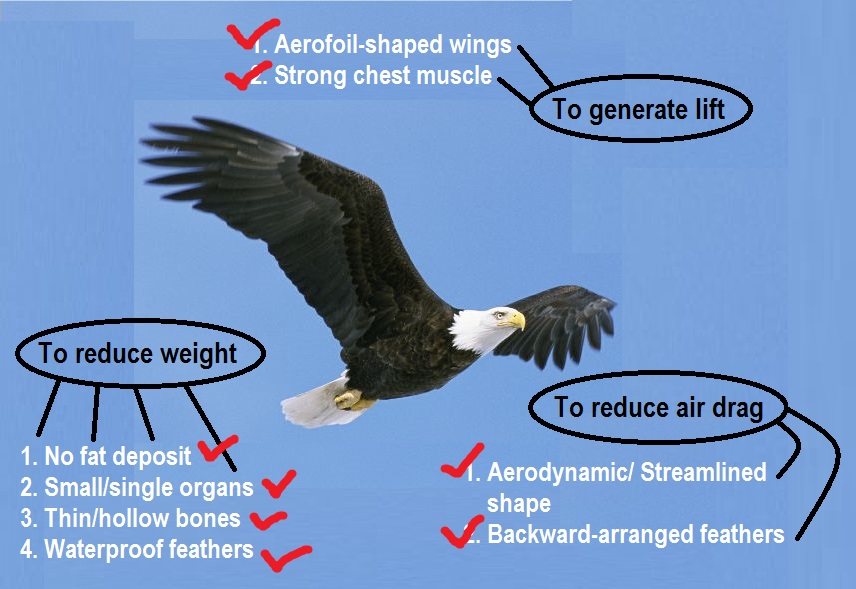How is a bird's body adapted for flight?
1 Answer
Aug 7, 2016
Adaptations for flight are many in a bird's body: these are called volant adaptations .
Explanation:
- Bird's body is spindle shaped which provide less resistance while flying or during swimming as in case of penguins.
- Bird's volume of the body is increased by presence of feathers compared to the weight.
- Fore limbs are modified into wings for aerial locomotion.
- Reduction of weight is achieved by:
loss of fingers;
loss of sutures in skull , skull bones are thinner;
absence of teeth , jaw bones form beak;
tendency of fusion of vertebral bones to form synsacrum ;
tail vestigial, represented by pygostyle that supports tail feathers;
external ear is represented by only tympanum;
fibula of leg is vestigial .
- Bones are pneumatic (with air spaces).
- There are air sacs attached to lungs .
- Large flight muscles are attached to humerus at one end, and the other ends of these large muscles remain attached to keel : latter is huge ventral projection on sternum. (Keel is much smaller/vestigial in flight less birds.)
- Gonads squeeze in size after breeding season; in females only one side of reproductive system remain functional.
- Birds excrete uric acid, hence voluminous watery urine is not produced. Urinary bladder absent .
- Birds need more energy to sustain flight :
their haemoglobin content is very high,
heart rate is high,
digestive, circulatory and respiratory systems are very efficient;
metabolic rate is also high,
thus a higher body temperature is maintained.


